COLORADO SPRINGS, Colo.---The Army is evolving to meet challenges on the battlefield today and honing tactics the service will use more frequently to help countries deny terrorists in the future, the Army chief of staff said May 14.
Gen. George W. Casey Jr. shared the progress the service has made since the 9/11 attacks and a look to the future challenges the Army will face with the nearly 800 people attending the "Home of the Brave" Armed Forces Week luncheon at Broadmoor Hall in Colorado Springs, Colo.
"It was ... clear that we were stretched and that the demands on us were so significant that we couldn't do the things we knew we needed to do to sustain the all-volunteer force," Casey said, referring to the state of the Army when he became the 36th chief of staff in April 2007. "We were so weighed down by current demands that we couldn't do the things to care for the force or to prepare ourselves to have some strategic flexibility with the ground force."
Casey initiated a plan to get the Army back in balance by the end of 2011. He stressed the importance of sustaining the Soldiers and their Families, citing they are "the heart and soul" of the Army.
The second principle focused on preparing Soldiers for success in the current conflict. Noting 150,000 Soldiers have been rotating over and back to Iraq and Afghanistan every year, Casey said the Army has to ensure that the troops have the tools to succeed.
Effectively resetting the force has been a challenge, he said, because for the last five years Soldiers have only had about a year at home between deployments.
"That's just too fast," he said, "but we had to get them recovered so they could go back and take care of their mission."
The final part of the plan was that the service had to transform from an Army designed to fight major tank battles on the plains of Europe to one designed for urban warfare in the deserts of Saudi Arabia.
"We have been completely changing all the organizations in the Army to ones that are more relevant today," he said. "We are 90 percent done with that, and we already have an Army that is far more relevant to the challenges we are facing than we did in September 2001."
He said progress is being made, noting the Army was able to meet the increased demand in Afghanistan - about 20,000 troops - without having to increase the length of deployments, while still building on the time Soldiers are at home.
As for the future, he said the Army must prepare for a long-term ideological struggle that won't be won entirely by the military.
"We're at war with the global extremist network that attacked us on our soil and continues to attempt to attack us on our soil," Casey said. "Those of you ... who have fought them understand that these are tough folks and they're not ... going to give up and they're not going to go away."
Since the military can only empower countries to take charge of the extremists, he said the Army has to look at trends in the global environment. Until about a year ago, Casey said, globalization was bringing prosperity to places around the world, but that prosperity was unevenly distributed. As a result, he said, people in parts of South America, Africa, the Middle East and Southeast Asia are more susceptible to be recruited by terrorist organizations.
Technology is another double-edged sword.
"The same technology that is bringing knowledge to anyone with a computer is being used by terrorists to export terror around the globe," Casey said.
He said the two trends that worry him most are weapons of mass destruction in the hands of terrorists and safe havens, countries or parts of countries where the local government can't or won't deny its territories to terrorists.
"We believe we are going to be in what we call an era of persistent conflict ... confrontation among states, nonstates and individuals who are increasingly willing to use violence to accomplish their political and ideological objectives," Casey said. "That's the reality that we are preparing ourselves to deal with."
What the war on the ground is going to look like in the latter part of the 21st century is another concern for the Army chief.
The Army's ground forces have to prevail in lengthy counterinsurgency campaigns, engage more frequently to help others build the capacity to secure their territory and deny it to terrorists, and support civil authorities both home and abroad, Casey said. The Army will also have to deter and defeat hybrid threats, groups that combine conventional irregular terrorist and criminal capabilities.
"We think that's far more likely than another state-on-state conflict that we can never walk away from," Casey said.
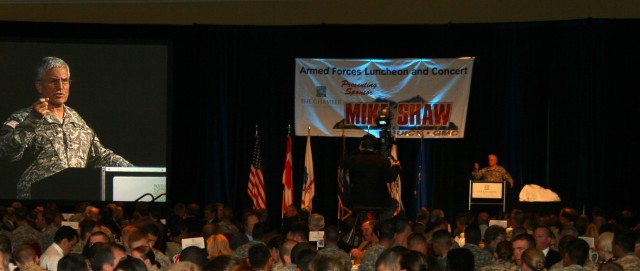
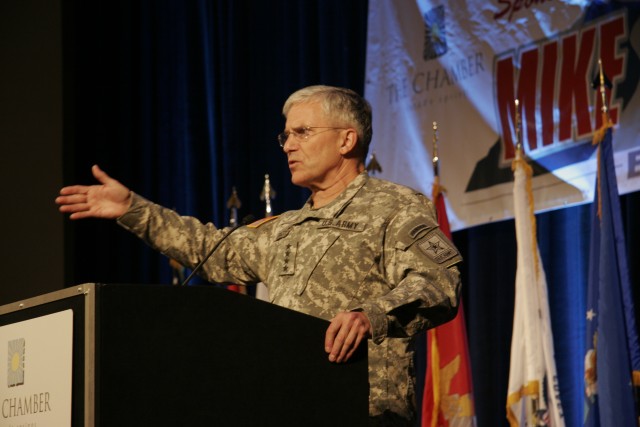
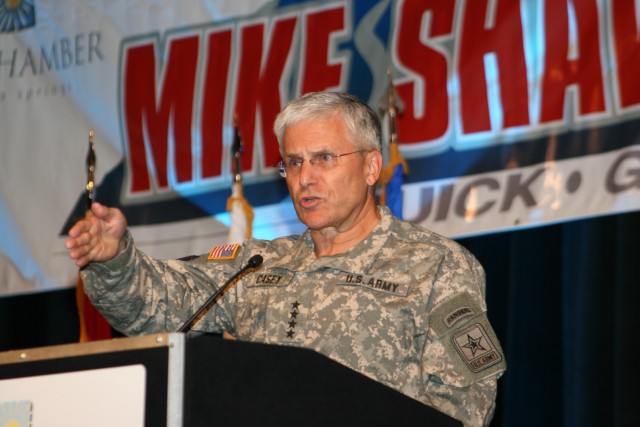
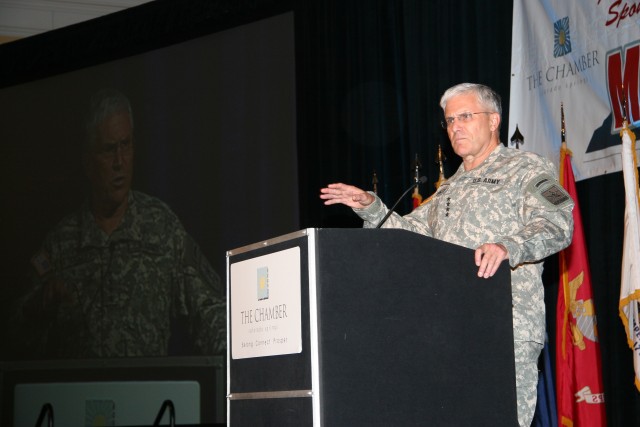
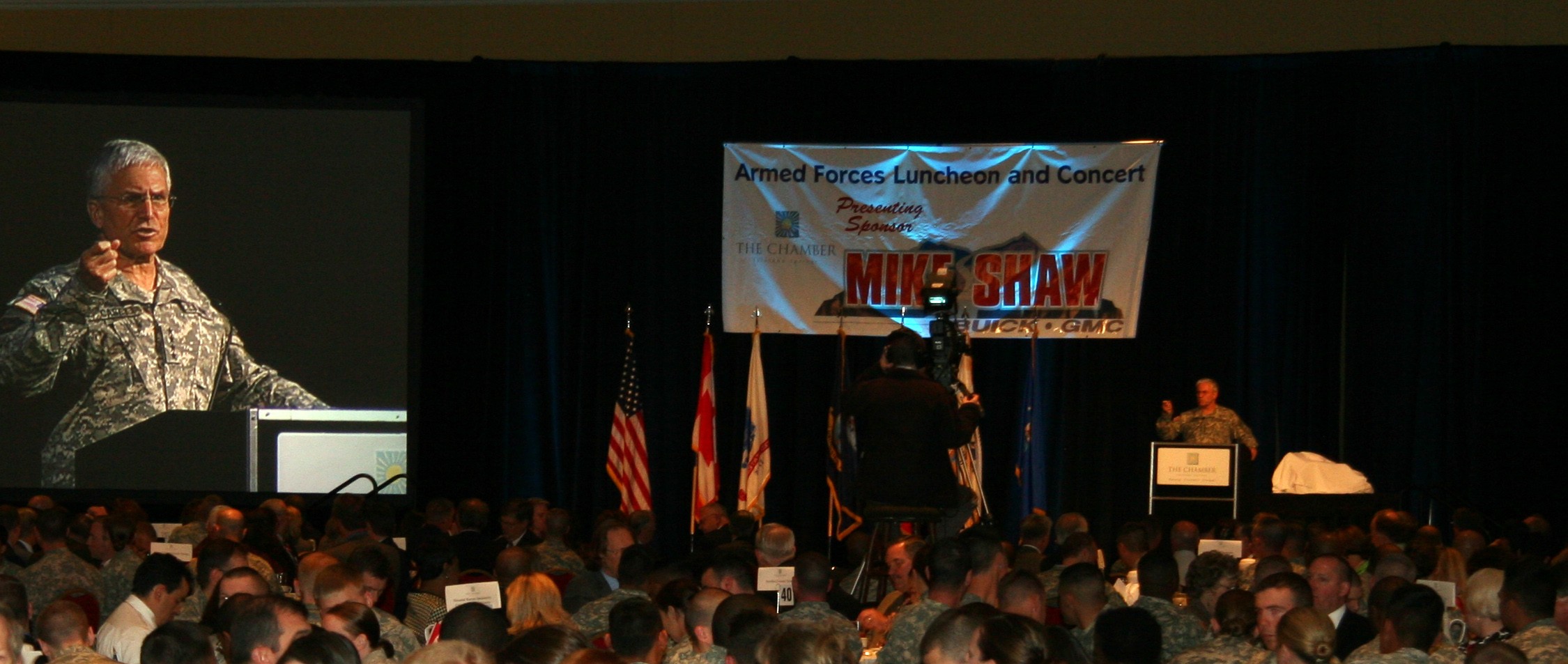
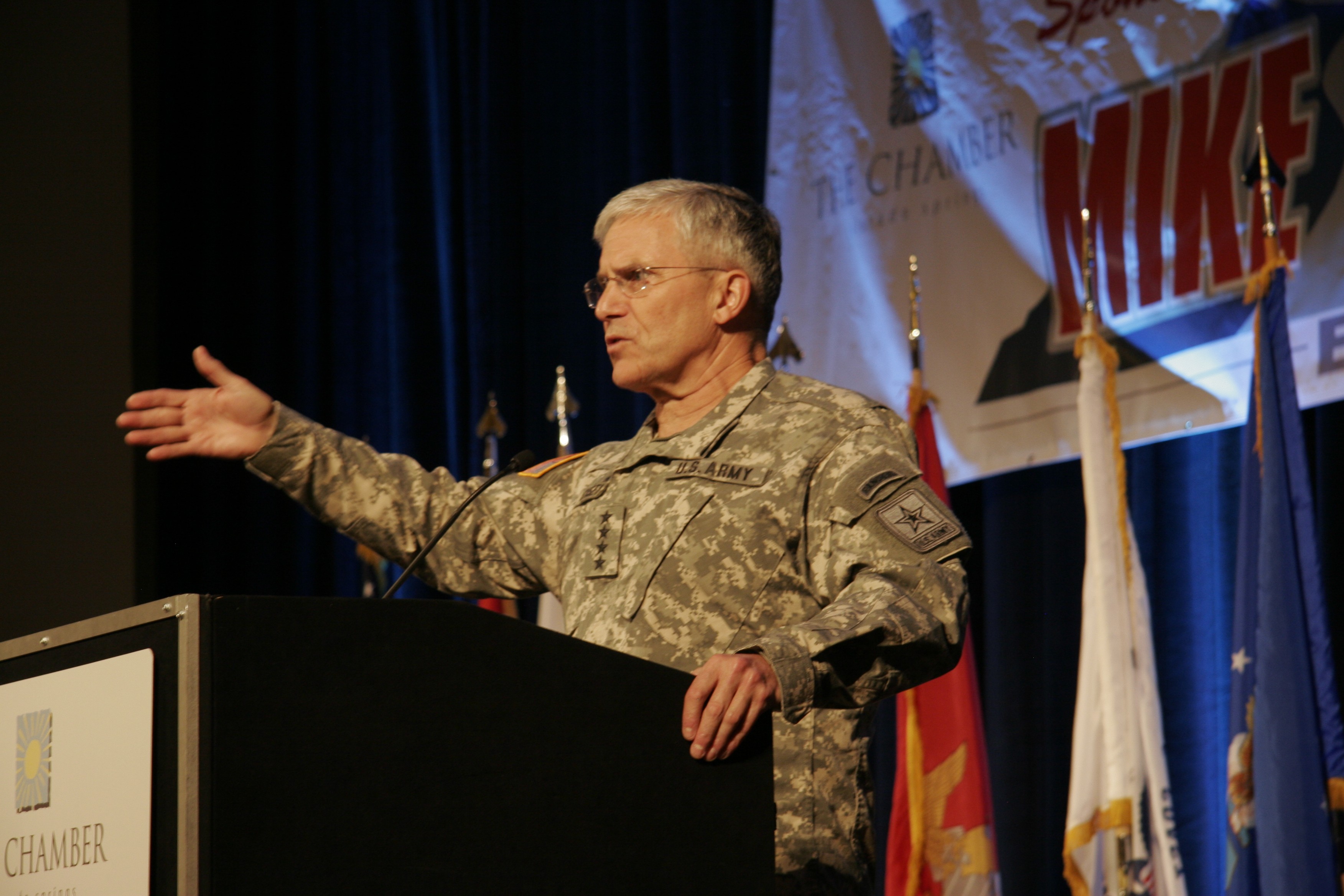
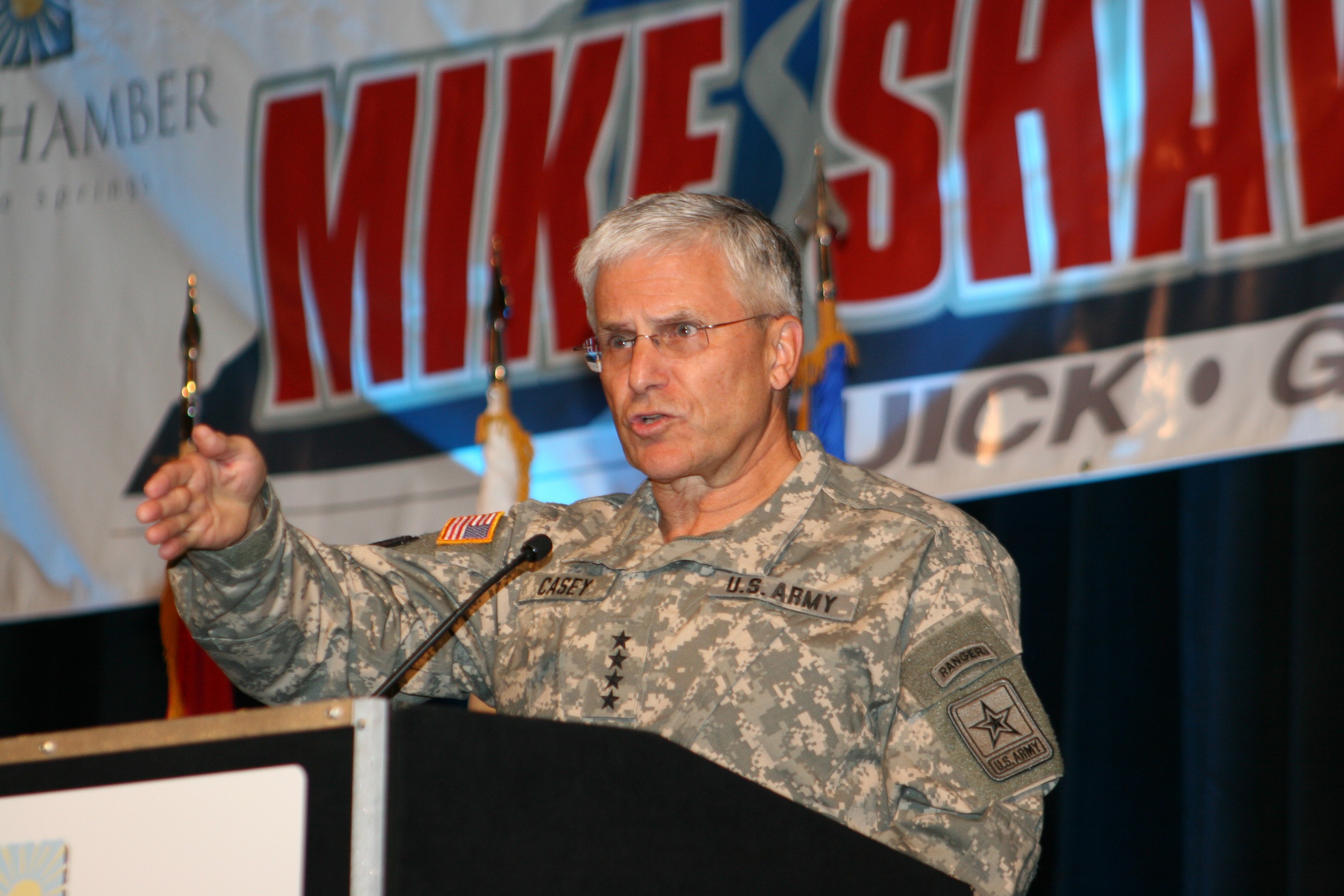
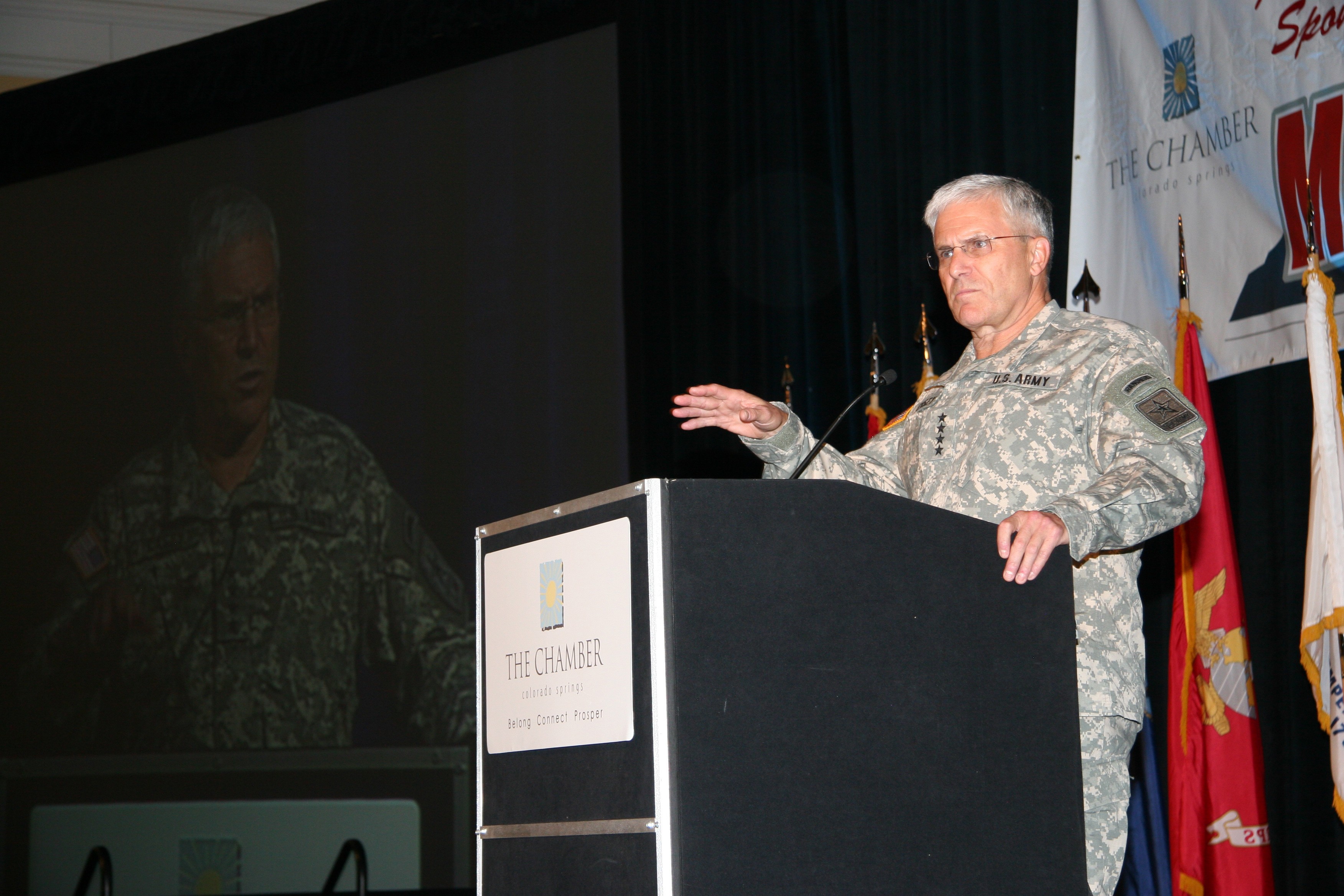
Social Sharing